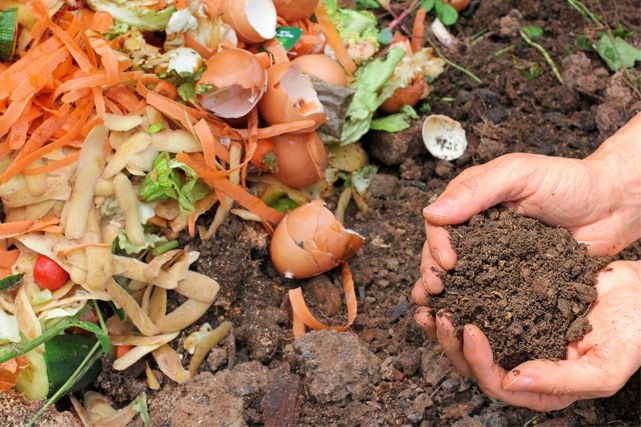Just like the French—many of whom are starting to compost since they are now being charged for their waste by weight—Canadians all across the country are beginning to appreciate the benefits of composting. Several municipalities offer to pick up waste for compost, but if you choose to do so, here is how to make your own compost at home.
1- Choosing the right place
Most people choose to compost in their yard. However, it is also possible to compost in an apartment by installing it indoors or on a balcony. Ideally, compost should be in a shady spot where water can drain easily. The compost should be humid but not too wet. Therefore, it should be sheltered from heavy rain and direct sunlight.
2- Choosing the right composting solution
Next, you must decide whether you prefer to accumulate your compost in a pile or in a large compost container.
Piles can work well, but there must be enough room in the yard for quite a large pile so that the fermentation can take place in its center. Moreover, pests will have easy access to the pile and, in the fall, there may be some extra work to do to protect it.
As for composting bins, there is a large variety of models available. There are even some specially designed bins for people that compost indoors, which is the best option for those who live in apartments or condominiums. It is also possible to build your own compost bin.
3- How to determine what household waste is viable for composting
There are two main categories of compostable waste: brown waste and green waste. In order to compost efficiently without odor, a 2-to-1 ratio between brown waste and green waste should be respected.
Brown waste is dry materials, rich in carbon; such as dry grass, dead dry plants, tea, coffee grinds, pits, nuts, cereal, twigs, branches, etc.
Green waste is humid or wet and is the source of nitrogen for the compost. Fruit and vegetable peels, grass, algae and egg shells make up the most part of this category.
It is not recommended to use meat or fish waste in the compost as they bring unpleasant smells and flies. Other types of waste that are best to avoid are pet feces, diapers, bones, shells, ashes, and rhubarb leaves.
4- Starting and maintaining compost in a bin
The first thing to do if you have chosen to use a compost bin is to cover the bottom with branches (around 10 inches) and to put a layer of brown waste over them. Then, as you add green waste, be sure to cover it up with brown waste or soil to avoid flies and odor. It is also recommended to stir the compost from time to time to ensure adequate air circulation. If the compost dries out, you can water it in order to keep it humid. Usually, it takes around six months to obtain a good-quality compost.
5- Considering other options: vermicasting or vermicomposting
Another option that may be considered and that diminishes the waiting period for obtaining compost is vermicasting. Adding earthworms to compost helps accelerate the process since they digest waste rapidly and their feces works well to complete the compost obtained through fermentation.
If you wish to use worms in your compost, you can buy them, you can use a compost bin with no bottom, or use compost piles. There are also compost bins specially designed for composting with worms and some companies even offer models designed for indoor use. Composting with worms is the solution for those who do not wish to wait six months to obtain compost for their plants!
